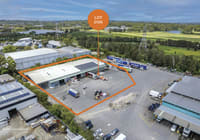
How to narrow construction’s massive wage gap
Commercial builder Urban Core has three women and three men employed in top-level project manager and senior project manager roles, with an average salary of $154,331. Despite this, the company has an overall gender pay gap of 25.45 per cent.
That gap, for both base and adjusted salaries, was narrower than the construction industry’s average median total salary gap of 31.8 per cent – the country’s highest – and came despite parity between men and women in both senior leadership and administrative roles, says chief executive Dominique Gill.

But the gender imbalance is clear in project delivery management positions such as site manager and foreman, which have average pay of $155,218 and in which Urban Core employees six men and one woman.
The case of Sydney-based Urban Core makes clear the hurdles – even in businesses led by woman – to greater equity in construction, a traditional industry in which the highest-paying jobs are those on construction sites, workplaces governed by long hours and rigid practices that have long excluded people juggling caring responsibilities, mainly mothers.
“To be in a really high-paying job you need to be really experienced, and to have real experience you need to have worked on site for a long time,” Gill tells The Australian Financial Review.
“The issue we have in trades – with just 3 per cent of them female – is represented in the site management. It’s the same conditions of work.”
Across Australia’s construction trades generally, female representation is very low. Census 2021 figures showed that just 0.9 per cent of bricklayers and stonemasons were female, women made up 1 per cent of plumbers and sheet metal trades workers, and only 1.1 per cent of carpenters and joiners, roof tilers and concreters.

Pay in these male-dominated roles is high. Pay schedules under the current NSW CFMEU building union pay agreement – before a proposed new draft agreement that could push these up 26 per cent – make for a minimum $188, 220 for skilled trades such as carpenters, bricklayers and plasterers, and $217,619 for a tower crane driver.
For head contractors such as Urban Core, which implement a contract or the client or developer, the need to build up experience on site to progress to senior roles has long kept women out of the pipeline of consideration for advancement.
Experience in site-based operational roles
“If you want to succeed in a managerial career in the industry and do really well, the typical pathway is you go – from site engineer, project engineer, project manager, project director – up in those core site-based operational roles,” says Helen Lingard, a distinguished professor at RMIT University in construction work health and safety.
“If you haven’t had the experience, it’s very hard to get into really senior positions within an organisation. The more administrative jobs, traditionally jobs where there is the capacity to work part time, tend not to provide that career trajectory or opportunity.”
At Urban Core, there is a staff of 12 contract administrators, project engineers and project co-ordinators, whose numbers are evenly weighted at six men and six women. They’re paid an average $102,544.
So, what is changing? Health Infrastructure NSW, a state government procurement agency, piloted its first construction project with a five-day site week with contractor RobertsCo in 2020, to work on the $341 million Concord Hospital project. It now has 24 such five-day-a-week contracts on its books, worth a total $2.2 billion.
By cutting out the traditional Saturday shift and making five weekdays longer and paying overtime, workers earn no less and the length of construction is not necessarily slower. And importantly, it frees up a Saturday for workers with family or other commitments.
These include CPB’s Nepean Hospital Redevelopment Stage 2, John Holland’s Shoalhaven Hospital redevelopment, Sydney Children’s Hospital Stage 1 and Minderoo Children’s Comprehensive Cancer Centre projects, Lendlease’s Tweed Valley Hospital development, Watpac’s St George Hospital redevelopment Stage 3 and Adco Construction’s Griffith Base Hospital redevelopment.
“We consistently find providing a weekend for workers improves their work-life balance and wellbeing – and importantly, creates no negative program impacts in terms of cost or time,” says Health Infrastructure NSW CEO Rebecca Wark.
But a five-day work week by itself won’t necessarily change things.
“If you’re very rigid around a five-day week, if you look at the work patterns of people, particularly people with caring responsibilities for young children, requiring everyone to rally early and being very rigid about work hours is not necessarily helpful,” Lingard says.
“It’s not necessarily going to make a big difference for people who have those responsibilities in their lives. But by combining it with some flexible options there is the potential to make a bigger difference.”
Flexibility around time was one key change in construction, where sites start earlier than office hours and often before childcare centres open, Lingard says.
One example could be to hold staggered pre-start site meetings, rather than requiring all staff to gather at the one early time at the beginning of a day.
“That’s more work – it requires more planning and so on, but it is potentially something that allows people to not have to start at that really early time and come in a bit later if they have to do a drop-off,” she says.











